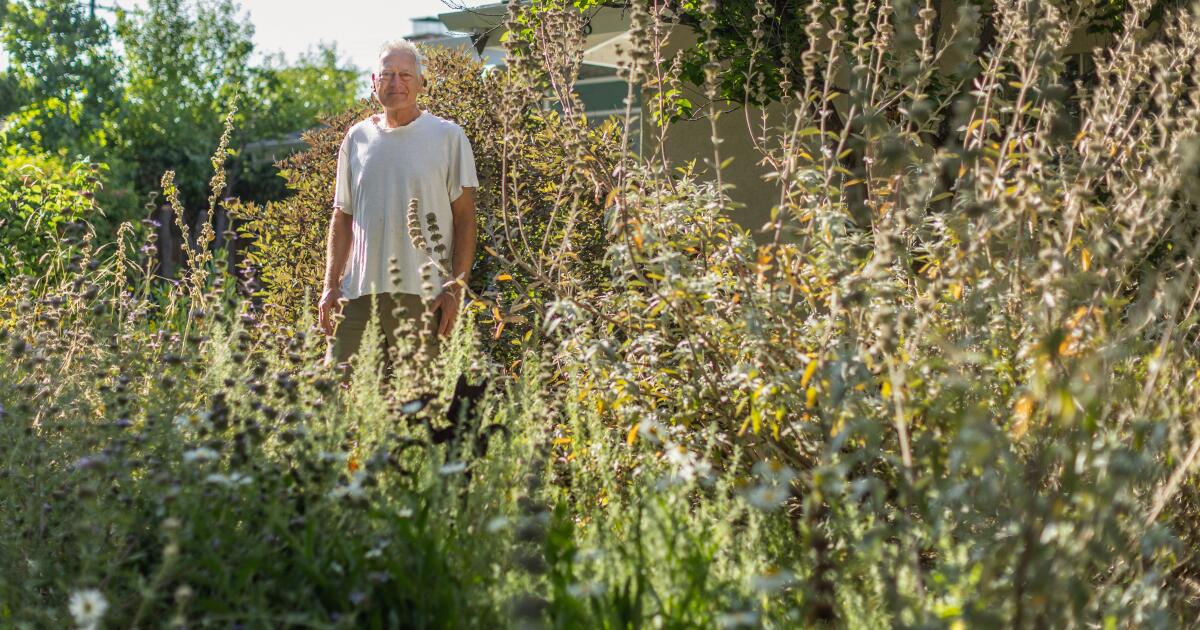Water-hungry lawns are a symbol of Los Angeles’ past, and this series highlights gardens with alternative, less water-intensive landscaping that look to the future.
Temperatures in the West Hills exceeded 90 degrees Fahrenheit, but in Eric Augustini’s front yard, an astonishing number of monarch butterflies, hummingbirds and honeybees were munching on California-friendly plants – sage, salvia and milkweed.
But pollinators aren’t the only ones that call the front yard home. “This is our buddy, Lizzy,” Augustini said with a smile as he and his wife, Lise Ransdell, greeted the giant lizard that crawled out from under a giant ‘Desperado’ salvia.
“This is a small yard, the size of a suburban postage stamp, but there’s a lot going on here,” Ransdell said of the yard’s abundant wildlife, which includes visits from rabbits, skunks, raccoons and possums.
It wasn’t always this way. When Augustinie bought the house in 1996, the traditional garden looked like many on the street, with a Bermuda grass lawn, a variety of shrubs and apricot trees.
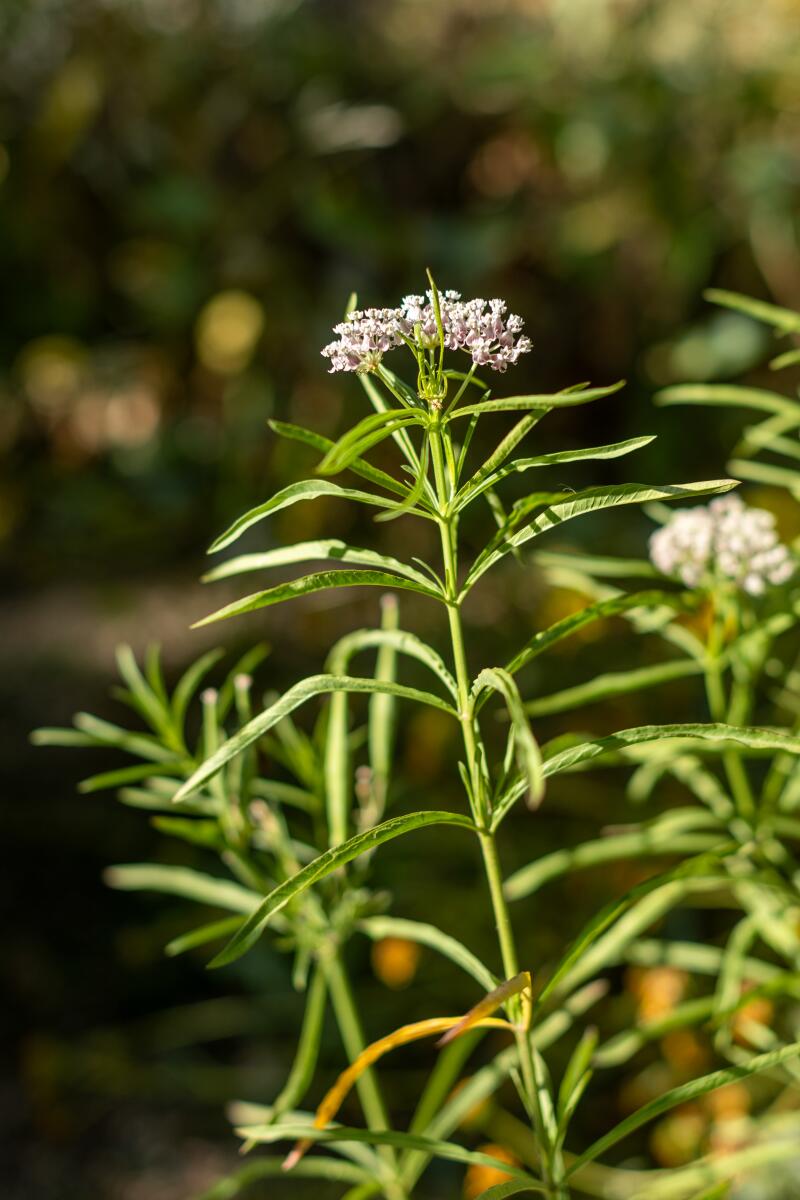
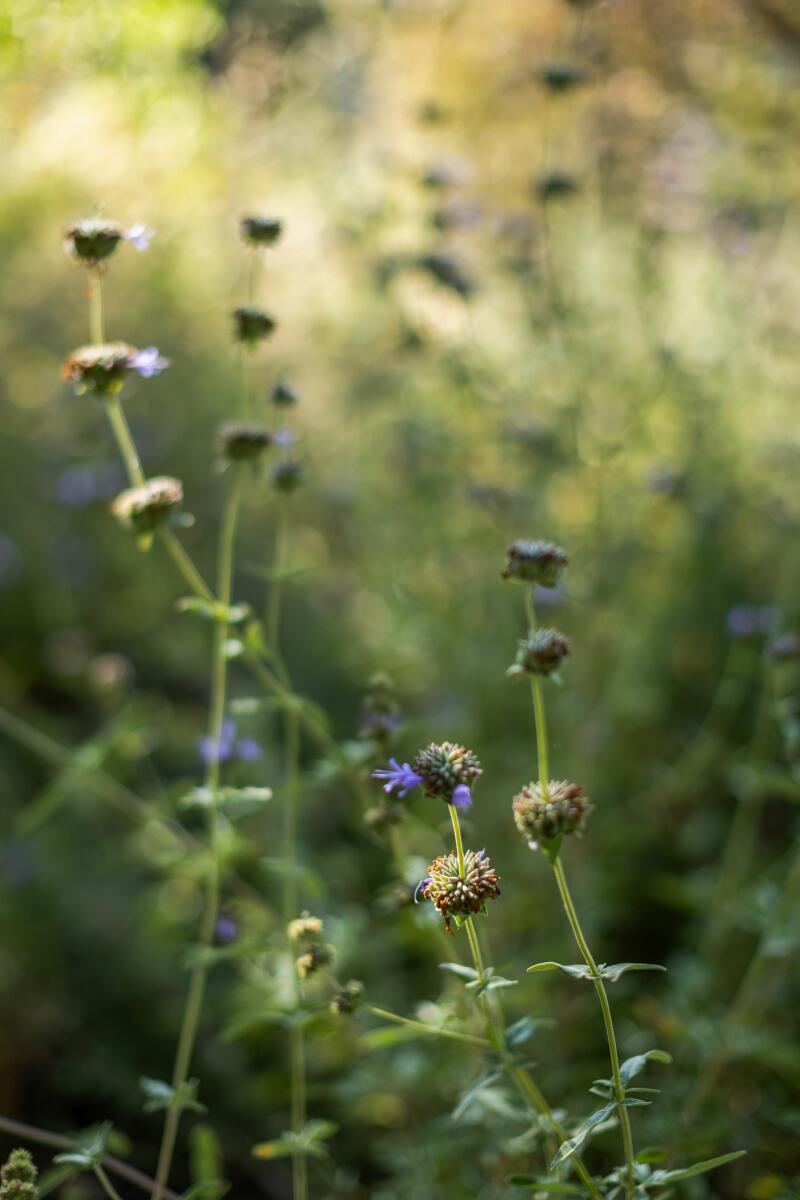
On the left is milkweed, a favorite food of monarch butterflies, and Cleveland sage, or Salvia clevelandii. (Myung J. Chun / Los Angeles Times)
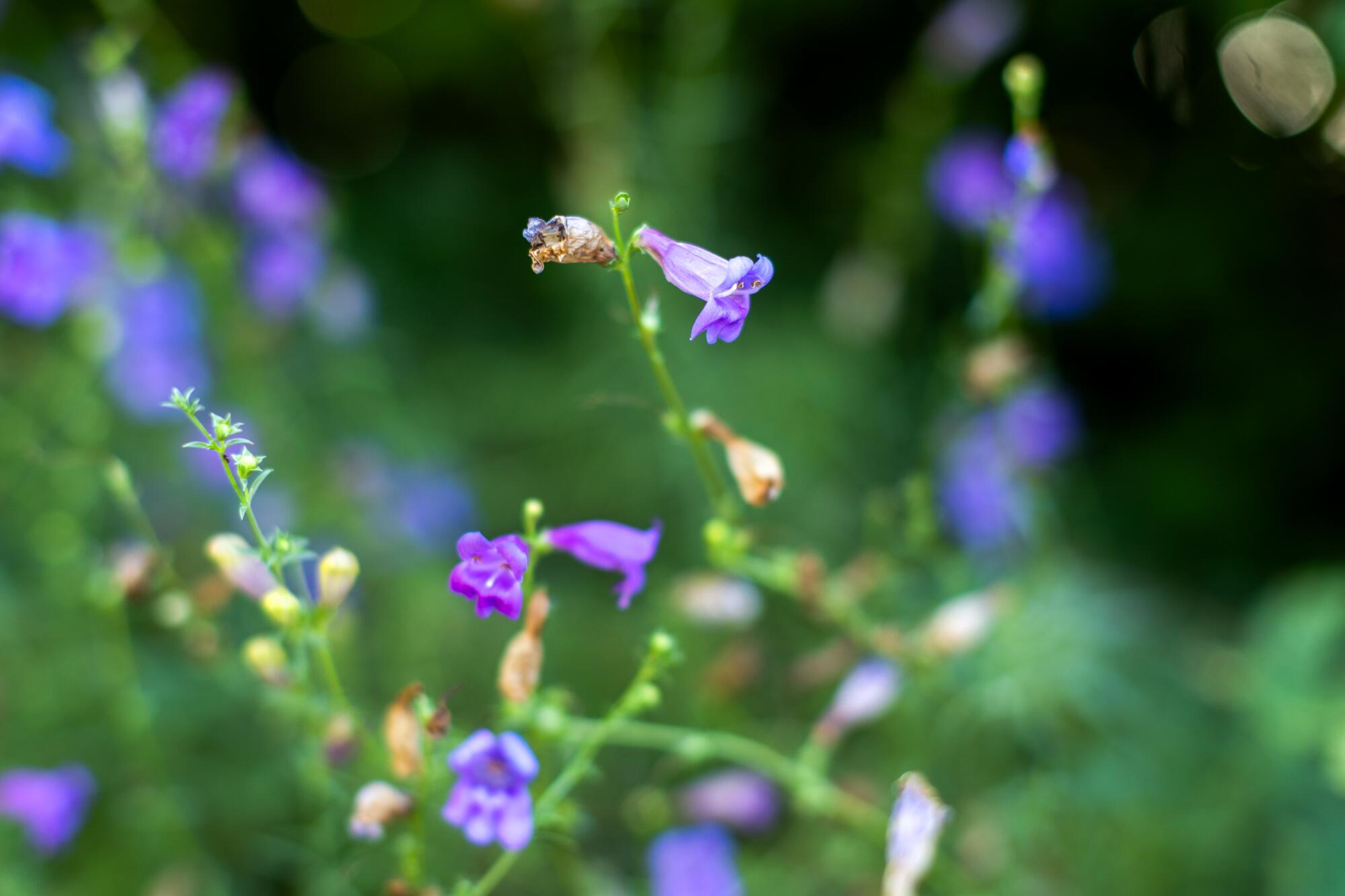
Foothill penstemons are drought-tolerant plants growing in Eric Augustiny’s front yard.
Sure, grass has its appeal, Augustiny acknowledges. But in his West Valley neighborhood, “concrete is like a frying pan,” and maintaining a water-hungry lawn in triple-digit heat is impossible. “Even if you want grass, and even if you don’t, you can’t maintain a lawn here,” he says, pointing to the brown grass that borders his tree-lined street.
“This garden will go dormant in the summer but will not die. Drought-tolerant plants will survive. Sugarbush, toyon, manzanita, coffeeberry, ceanothus and hummingbird sage will remain vibrant green all year round. California fuchsia will bloom into fall, and the upper spikes of salvia leaves will die back after flowering, but the structure and foliage will remain vibrant.”
Before buying her home, Augustiny hadn’t done much gardening beyond mowing the lawn — “I knew how to replant the lawn. A lot of times,” she said with a laugh — so she decided to learn everything she could about removing it, cultivating healthy soil and replanting with drought-tolerant alternatives.
He started off by attending a lasagna mulching demonstration led by artist-in-residence horticulturist Lee Adams at the Los Angeles County Botanical Gardens’ Crescent Farm. Inspired by the class, Augustini then checked out books on California native plants at the Los Angeles Public Library and attended a hands-on workshop at a Southern California Metropolitan Water District field office.
When the couple renovated their home in 2018, they decided it would be the right time to remove the lawn. LADWP’s Lawn Conversion Program (which currently pays $5 per square foot to remove your lawn and replace it with a low-water grass) was an incentive but not the main driver. “We weren’t in it for the money,” Augustiny says of the $2,000 discount they received at the time, “but it helped us cover the costs.”
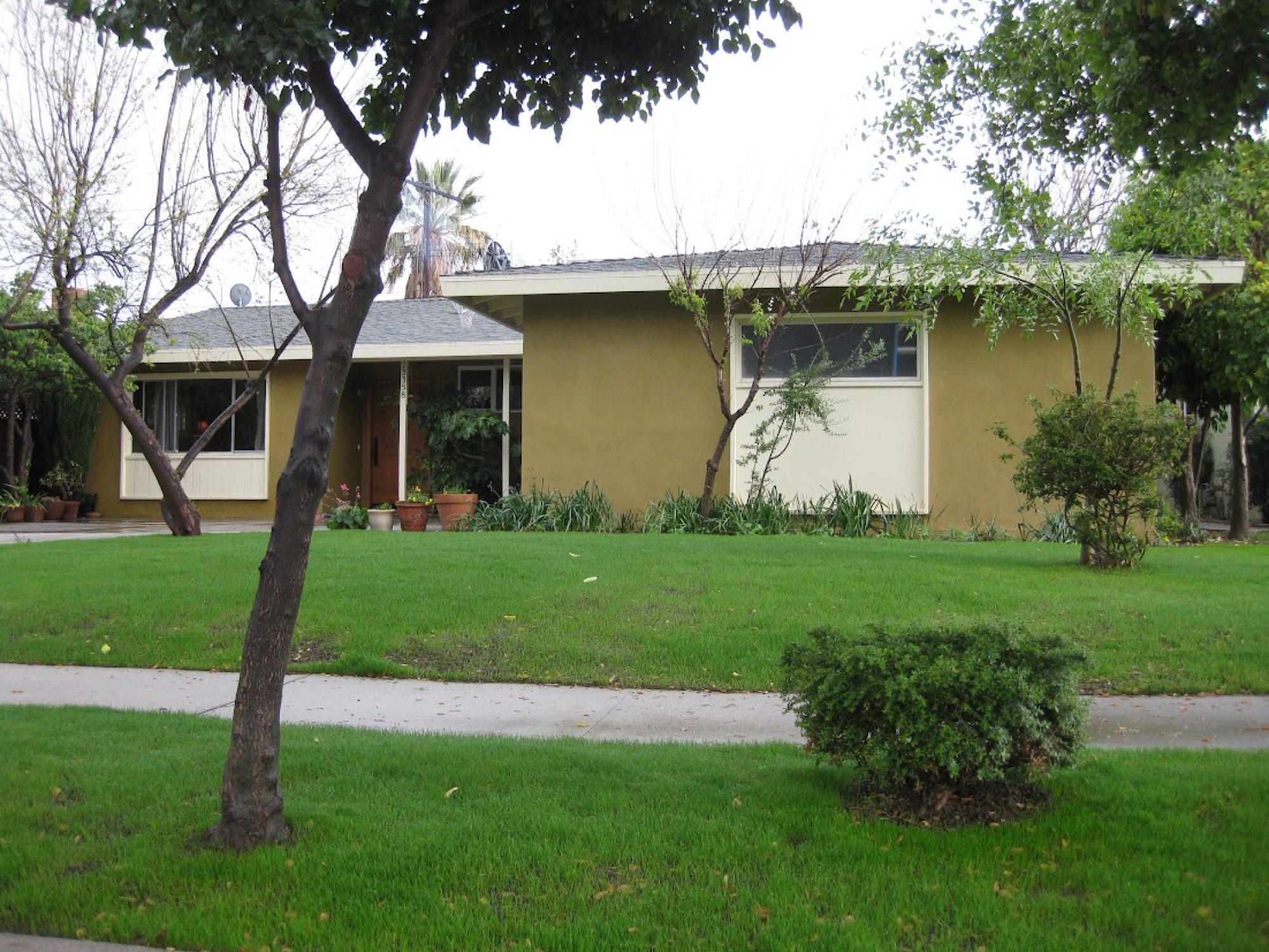
Eric Augustiny’s front yard in West Hills before removing the grass and replacing it with drought-tolerant alternatives.
(Eric Augustiny)
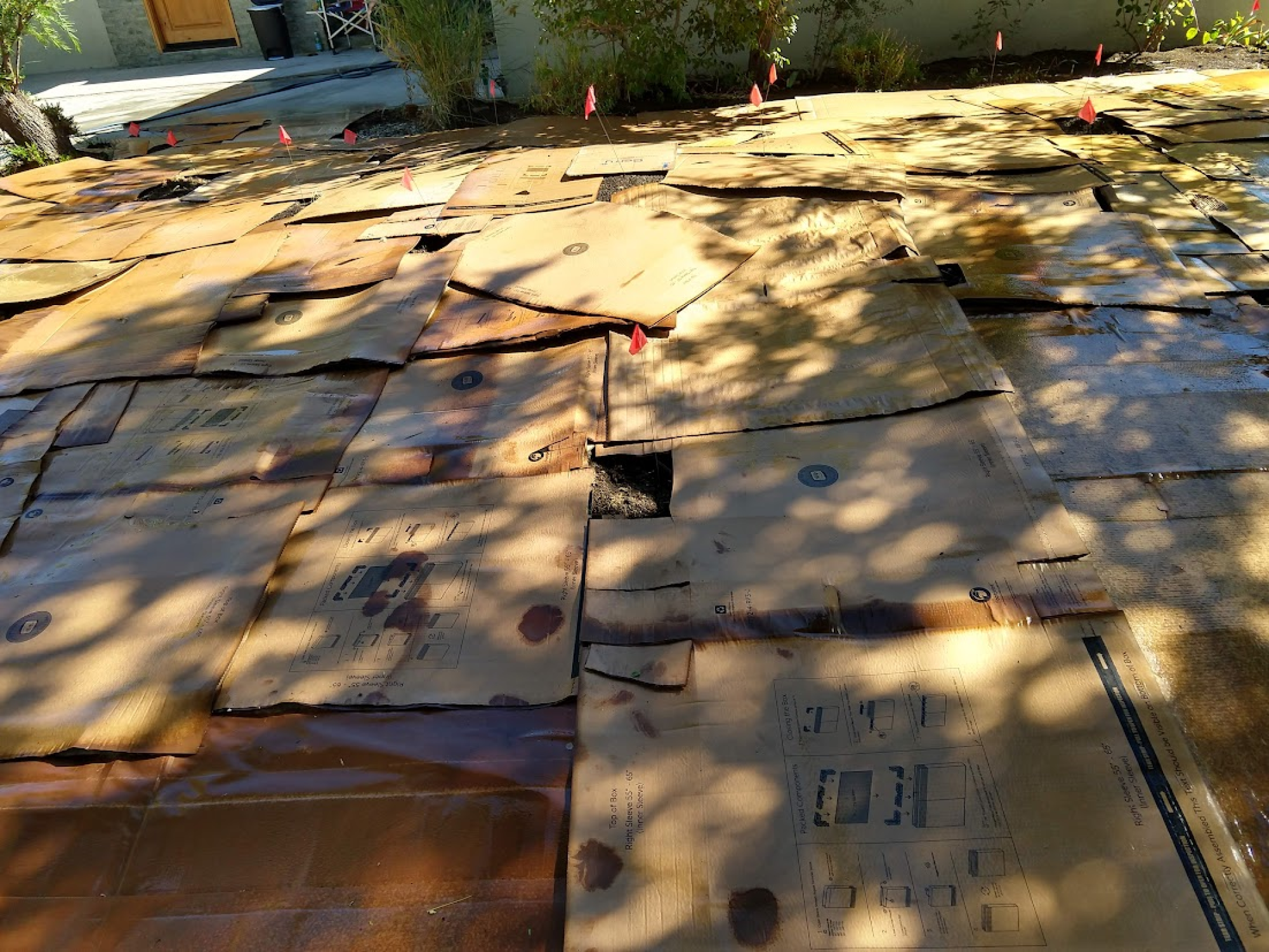
Eric Augustiny’s front lawn is covered with cardboard during a sheet mulching operation.
(Eric Augustiny)
With the right education, Augustiny decided to remove the lawn and plant something he didn’t need much water himself. Just don’t call him a designer. “I came up with a simple design, put in a drip system and put down cardboard,” Augustiny said of sheet mulching, which involves wetting cardboard and covering it with three inches of mulch.
As he covered his lawn with cardboard, neighbors would often ask him what he was doing. “I told them I was getting rid of Bermuda grass,” he recalls. “And they’d say, ‘Good luck.'”
The class gave Augustini a new perspective on gardening. Following Adams’ advice to “paint with wildflowers,” he sowed wildflower seeds on top of his plants. He planted hummingbird salvia, which he had read would thrive in the shade of oak trees. Concerned about the decline of monarch butterflies due to habitat loss, he felt it was important to plant narrow-leaf milkweed (Asclepias fascicularis). “They’ve been popping up in droves ever since,” Augustini said.
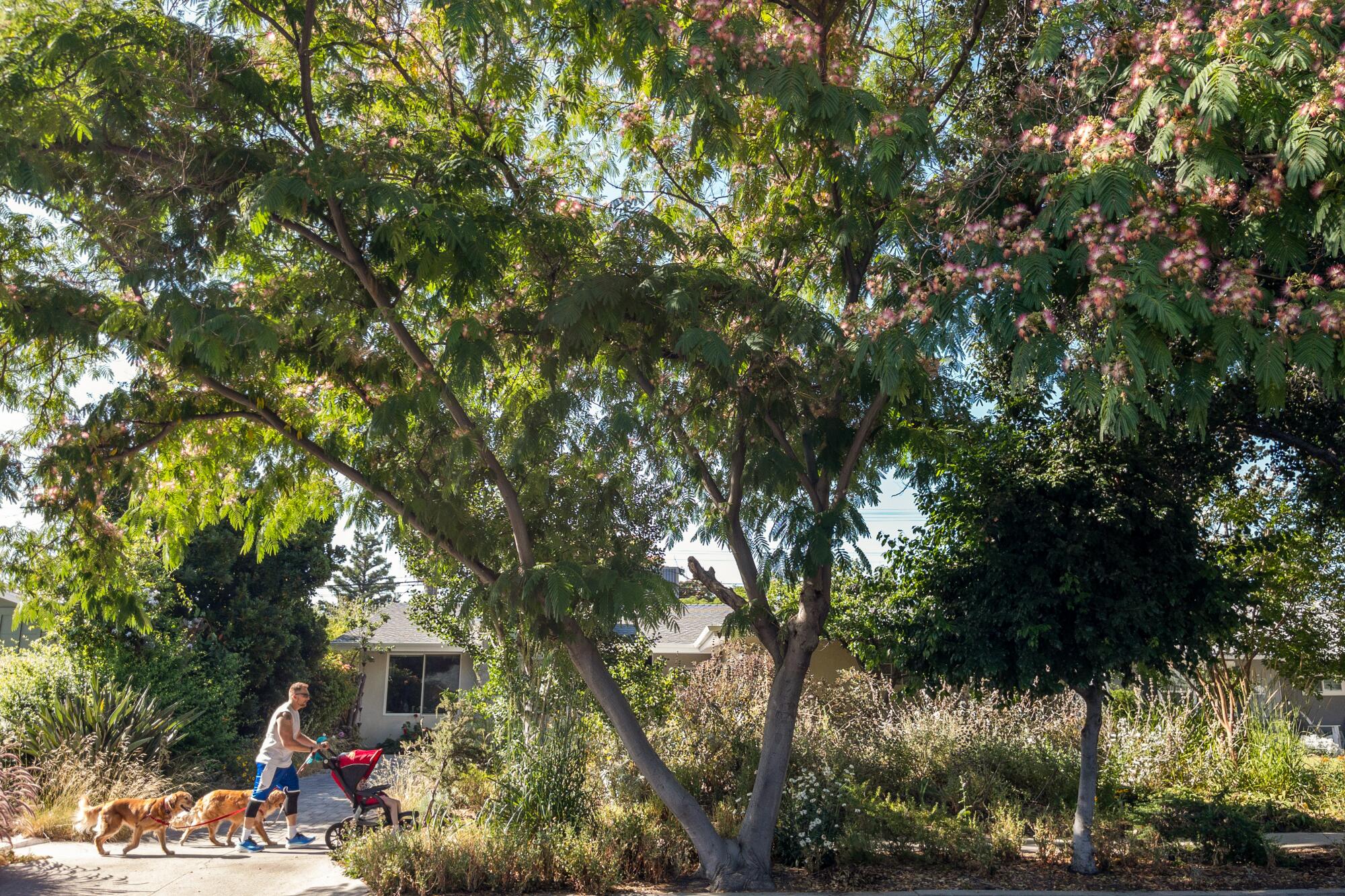
Coast oaks, Catalina cherries and albizia provide shade along the parkway, and Augustinie uses rainwater tanks and gutters to collect water. She also installed drip irrigation.
For plants, Augustini visited native plant nurseries throughout Los Angeles, including the California Botanical Gardens in Claremont, the Theodore Payne Foundation in Sunland, and Pierce College in Woodland Hills. “Right now, we grow plants from seeds and cuttings, and that has to stop,” he says. “We can grow and regenerate gardens.” He’s also collected animal waste from the Los Angeles Zoo (commonly known as Zoo-Doo) for free at the Griffith Park compost facility.
He admits that initially he killed his native plants by overwatering them in the summer, a situation that ended in 2022 when he took a three-month hands-on course on caring for a native garden from Antonio Sanchez of the Santa Monica Mountains Foundation. “I learned that drought-tolerant plants have to tolerate the rainy season to survive the dry season,” he says. He stopped watering them in the summer, thinking the plants just wanted water.
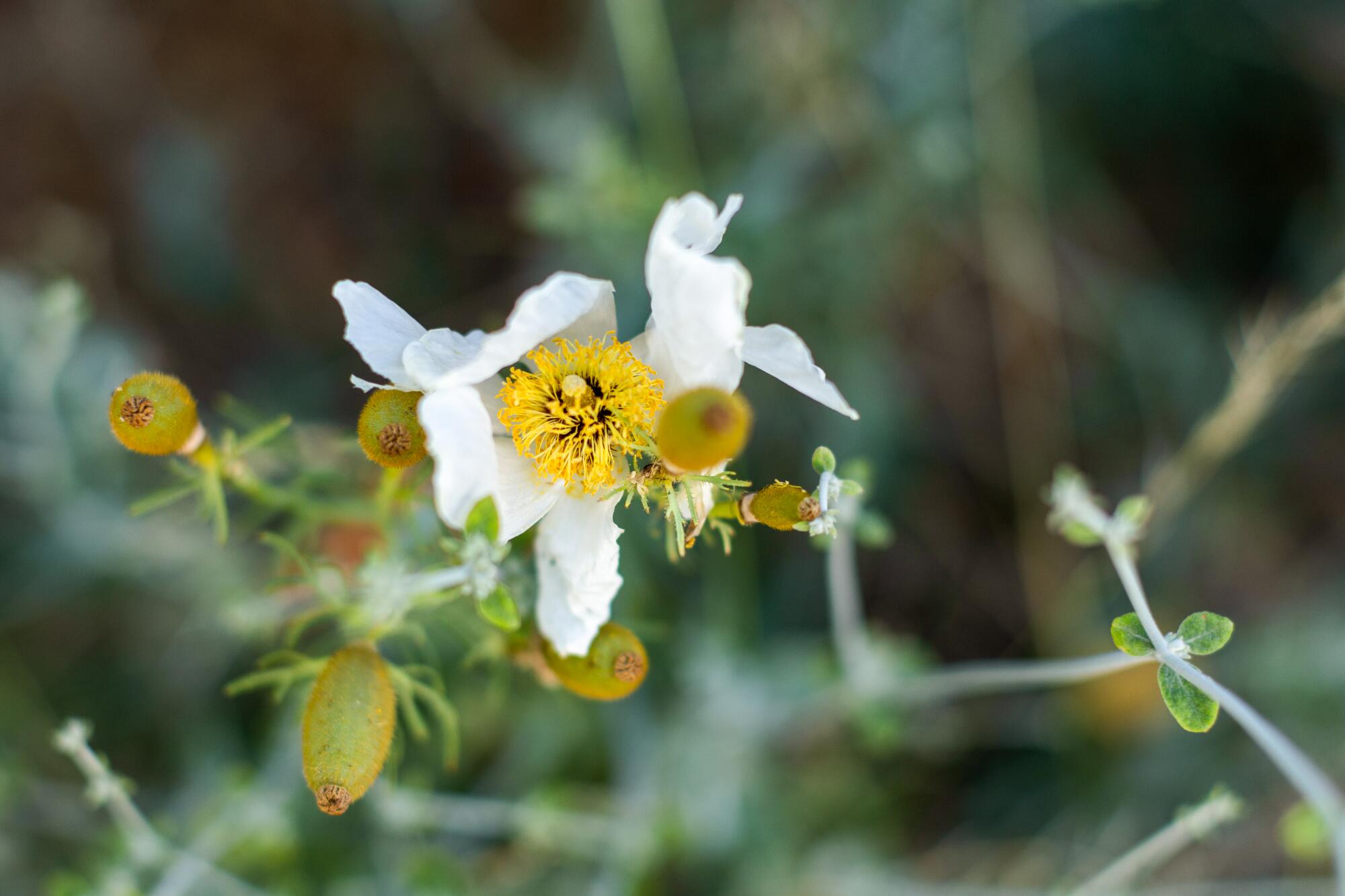
Eric Augustiny’s drought-tolerant front garden is home to Matilia poppies.
Six years later, Augustiny thinks Adams’ “sleep, creep, leap” mantra has finally come to fruition. “Adams said that when you plant something, it sleeps the first year, creeps the second, and leaps the third,” Augustiny explains. “But between 2020 and 2022, we’ve only gotten 11.5 inches of rain, and the garden hasn’t moved.”
Two years have passed, and after two years of record rainfall in Los Angeles, native California habitat has overtaken my front yard.
“I hate to steal the title of a Hollywood movie,” the actor said, “but all of a sudden, everything was everywhere at once.”
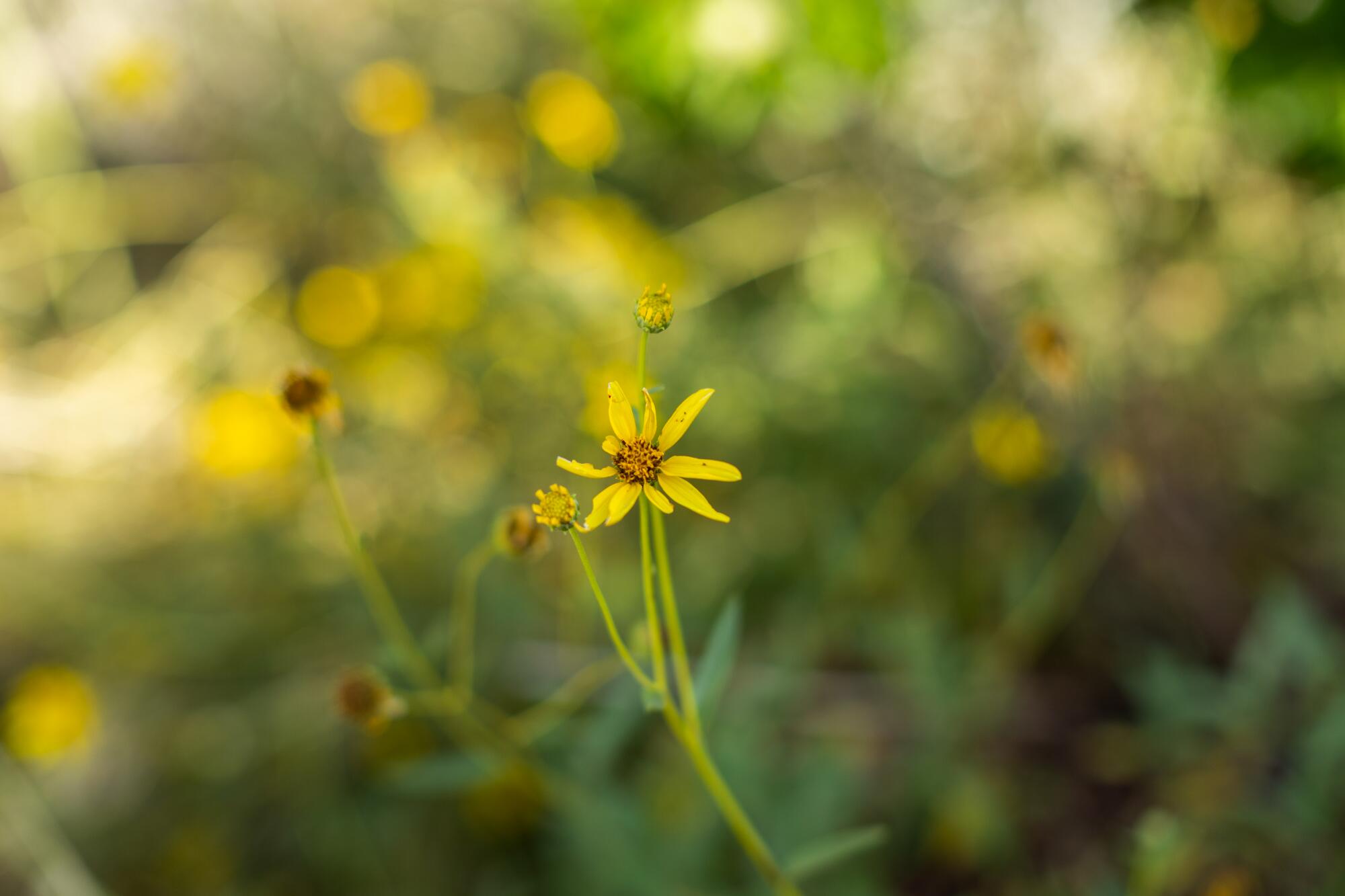
Narrow-leaf sunflowers grow in the garden.
The garden is wild and colorful with the heavenly scent of blooming sages such as Cleveland (Salvia clevelandii), hummingbird (Salvia spathacea) and white (Salvia apiana), as well as colorful wildflowers such as fire-resistant California fuchsia (Epilobium canum) and purple foothill penstemon (Penstemon heterophyllus).
Many of the larger, drought-tolerant plants have been planted away from roads, but some, such as big-berry manzanita (Arctostaphylos glauca), appear dwarfed by the California buckeye (Aesculus californica), coffeeberry (Frangula californica), and sugarbush (Rhus ovata).
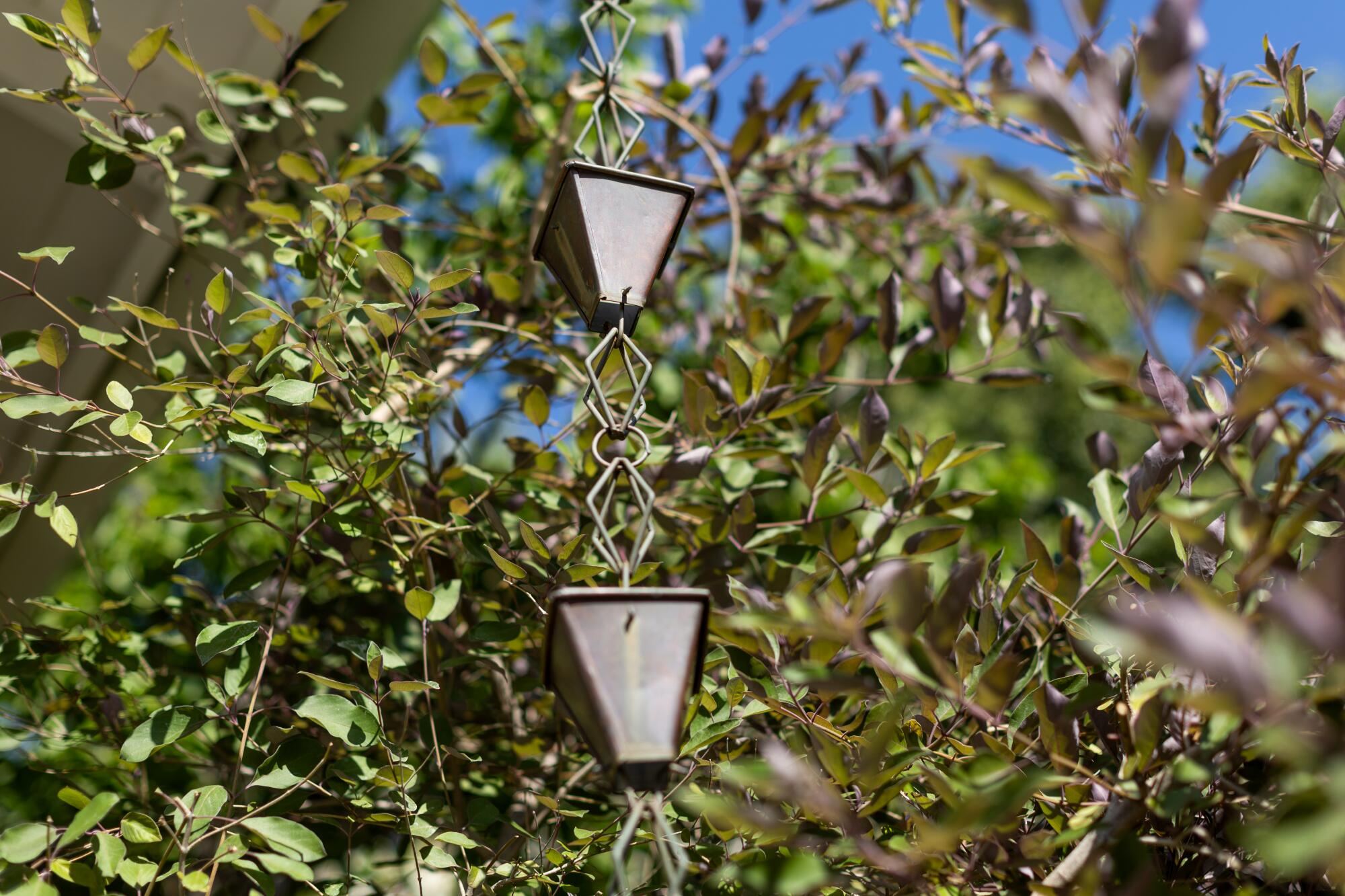
Gutters capture rainwater from the roof.
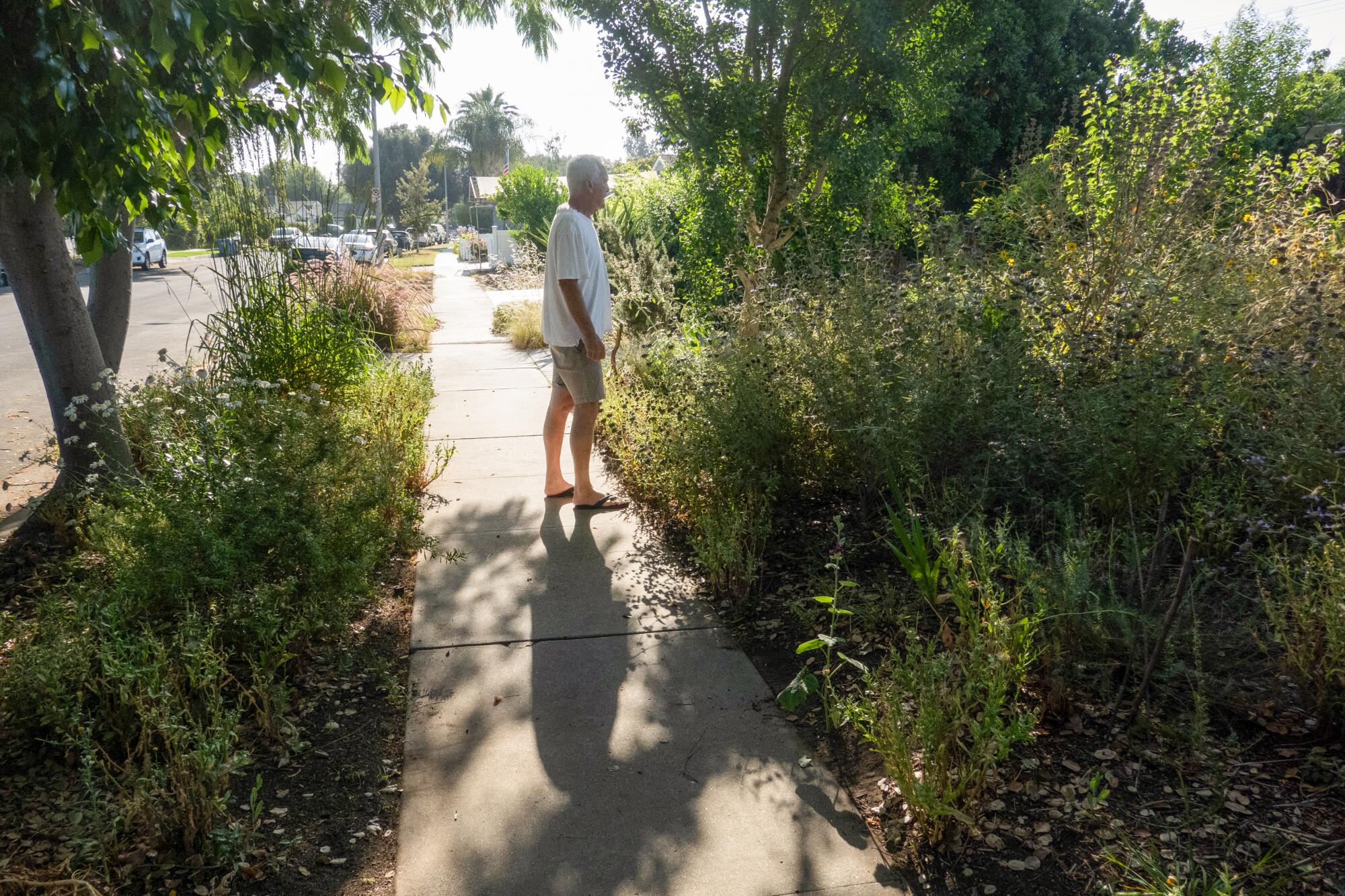
Augustiny’s front yard and parking lot are filled with drought-tolerant plants.
No longer a gardening novice, the Seattle native is a passionate advocate of the need for everyone to do their small part to stop climate change. In the face of record-breaking heatwaves, he thinks creating a native habitat in his front yard, installing a rainwater tank and a permeable driveway are good places to start.
“I love nature, and Los Angeles has it all,” he says. “I’m not a purist when it comes to plants. I call them climate-appropriate plants. But if we can get rid of asphalt pavement and reduce storm water runoff, it’s better for our water quality and our lives.”
Now, when his neighbors drop off their kids at school, they no longer ask him what he’s doing in his front yard. “They compliment the garden,” says Augustiny, who waters it twice a month. “It’s not just for me. It’s for everyone.”
Plants in this garden
Arabian lilac (Vitex trifolia)
Coffeeberry (Frangula california)
Sugarbush (Rhus ovata)
Cleveland sage (Salvia clevelandii)
Narrowleaf Milkweed (Asclepias fascicularis)
Black sage (Salvia mellifera)
White Sage (Salvia apiana)
Purple Sage (Salvia leucophylla)
Bigberry Manzanita (Arctostaphylos glauca)
Palmer’s Abutilon (Abutilon palmeri)
Desperado Sage (Salvia desperado)
Penstemon heterophyllus ‘Margarita BOP’
California Fuchsia (Epilobium canum)
Purple needleflower (Nassella pulchra)
Australian Emu Bush (Eremophila glabra)
Snowberry (Symphoricarpos mollis)
California Buckwheat (Eriogonum fasciculatum)
Hummingbird Sage (Salvia spathacea ‘Las Pilitas’)
Nuttall sunflower (Helianthus nuttallii)
Elymus condensatus
Toyon (Heteromeles arbutifolia)
Dudleya aphid
Coulter’s Matilia Poppy (Romneya coulteri)
Juniperus communis ‘Yankee Point’
Fiesta Marigold Monkey Flower (Mimulus ‘Fiesta Marigold)
Mimulus (Dyplax) “Fiesta Marigold”

